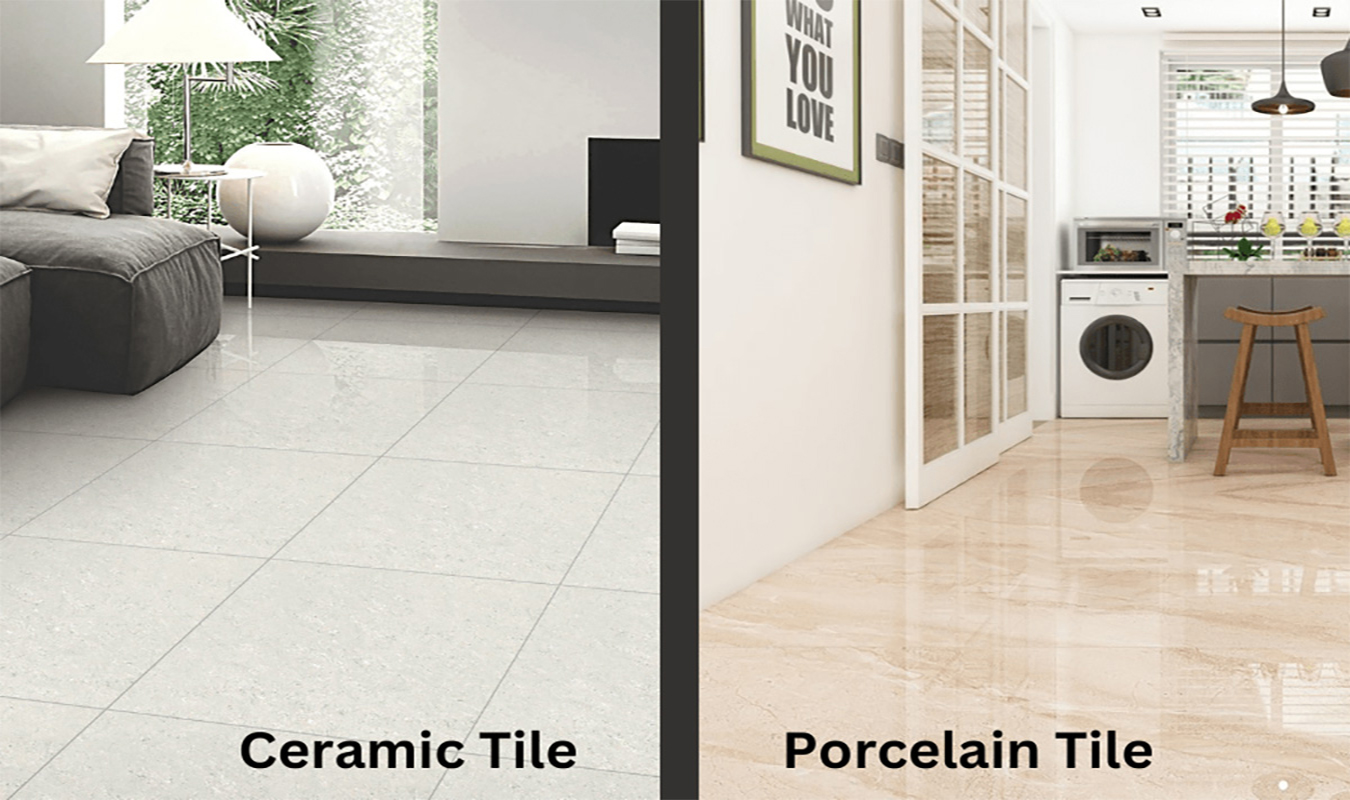
27 Aug 2024 By Mark Petter
Difference between ceramic and porcelain tiles
When choosing flooring options, durability and resistance to wear are two important factors to consider. Both types of tiles are well-renowned for their hardiness, but certain aspects can make one more suitable for a particular project than the other.
Ceramic tiles are known for their durability and ability to withstand regular wear and tear. However, compared to porcelain tiles, they are more susceptible to chipping and cracking, especially in high-traffic areas. This makes ceramic tiles less ideal for busy households or commercial spaces that experience heavy foot traffic.
On the other hand, porcelain tiles are renowned for their exceptional durability. Thanks to their dense composition and firing process, they are highly resistant to scratches, stains, and moisture, ensuring that your flooring remains intact even in the busiest environments
.
Both ceramic and porcelain tiles offer excellent performance in terms of resistance to wear. However, porcelain tiles have a slight edge due to their higher density and hardness, making them an excellent choice for areas that experience heavy use, such as kitchens, hallways, and entryways.
Examining the Aesthetic Appeal of Ceramic and Porcelain Tile
Aesthetic appeal and design options play a significant role when choosing flooring. The range of design options available for each will help determine which flooring material will suit your project best.
Ceramic tiles offer various colors, patterns, and textures, making them a versatile choice for any design. From sleek and modern to rustic and traditional, ceramic tiles can be customized to fit your desired aesthetic. Advancing technology even allows manufacturers to mimic the look of natural stone or hardwood, providing endless design possibilities.
Porcelain tiles also offer an extensive range of design options. In various sizes, colors, and finishes, porcelain tiles can create a sleek and contemporary look or emulate the warmth and character of natural materials. Their versatility makes them suitable for residential and commercial spaces, offering an array of design choices for any style preference.
When comparing the aesthetic appeal and design options of ceramic and porcelain tiles, it ultimately comes down to personal preference. Consider the overall style of your space, the desired ambiance, and the functionality of the tiles to make an informed decision.
Maintenance and Cleaning Needs of Ceramic and Porcelain Tile
When it comes to maintaining and cleaning ceramic and porcelain tiles, both perform admirably; however, comparing the maintenance virtues of each can prove to be the deciding factor between the two.
Ceramic tiles are relatively easy to clean and maintain. Regular sweeping or vacuuming followed by mopping with a mild cleaning agent is usually sufficient to keep them looking clean and fresh. However, it's worth noting that the grout lines between ceramic tiles can accumulate dirt and stains over time, requiring periodic deep cleaning or resealing.
Porcelain tiles are even easier to maintain; thanks to their low porosity, they are highly resistant to stains and dirt. Regular sweeping or vacuuming is usually enough to keep them clean. Additionally, grout lines with porcelain tiles are less prone to staining, reducing the need for frequent resealing.
For long-term maintenance, ceramic and porcelain tiles can benefit from occasional professional cleaning and sealing to ensure longevity and aesthetic appeal. Overall, when it comes to maintenance and cleaning, both types of tiles are relatively low-maintenance options, with porcelain tiles being slightly more resistant to staining and dirt accumulation.